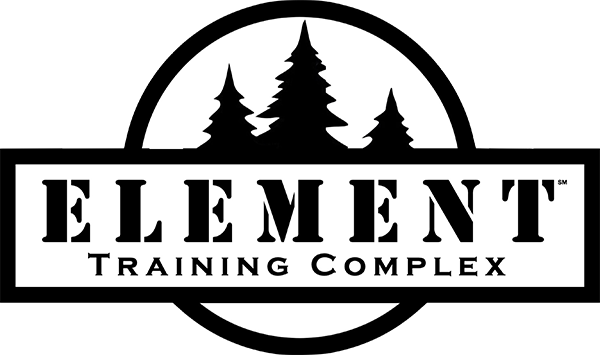Overview
This is a (5) day course designed for either new or current firearms instructors. Civilian, law enforcement, and military personnel are welcome to attend this course. Come learn from the professionals who make it their priority to impart the skills, knowledge, and techniques to maximize your potential as a Rifle Instructor. Through the application of our SIG SAUER Academy Principles of Firearm Training, you will arm yourself with the abilities to teach the fundamentals of marksmanship to a broad array of student types. Prioritizing training objectives, coaching techniques, correcting problem shooters, developing drills and courses of fire are all part of what you’ll take from the course. Come see for yourself why so many instructors and agencies have successfully implemented the SIG training philosophies to their new or current training programs. We’ll make you a better instructor, guaranteed.
Experience Requirements
This training course is designed for the current or prospective firearms instructors. You must have documentation of successful completion of an entry level carbine skills program from a law enforcement agency or training facility. Non-Law Enforcement attendees must have successfully completed Rifle 104 AND Handgun 104*.
*Students who successfully completed the 2-day course ‘Handgun 104: Introduction to Defensive Handgun Skills’ prior to February 2024 will have fulfilled the prerequisites necessary to enroll in any courses that require successful completion of either the 1-day ‘Handgun 104: Advanced Handgun Skills’ or the 1-day ‘Introduction to Defensive Handgun Skills’ course.
Course Outline
Upon successful completion of this course, the student will be able to:
- Utilize SIG SAUER Academy Principles of Firearms Training
- Explain the Fundamentals of marksmanship
- Effectively use objective-based training methodology
- Implement principles of adult learning and EDIP
- Apply performance-based training vs outcome-based training
- Apply safe gun handling in any environment
- Coach skill development
- Effectively utilize team teaching concepts
- Identify the benefits of shooter inoculation
- Better implement target selection and scoring
- Apply better target to target transitions
- Teach a variety of uses of cover
- Teach a variety of alternative shooting positions
- Effectively learn and teach shooting on the move
- Improve the marginal shooter
- Grasp alternative methods of firearms training
Evaluation and Assessment:
Successful completion of the course is determined by meeting several combined course requirements. Achievement is not solely based on passing or failing the qualification course, but on overall performance across multiple graded events. The following distinctions apply:
- To Receive a Patch: You must pass at least one qualification and pass all the graded events.
- To Receive a Certificate of Achievement: You must achieve no less than 70% for all combined graded criteria (Technical Knowledge, Teaching Ability, and Shooting Performance).
- To Receive a Certificate of Attendance: If you do not achieve at least 70% for all combined graded criteria, you will receive a Certificate of Attendance.
Students will be evaluated on their overall performance within the entire course, based on the following criteria:
- Safety protocols
- Firearms skills and proficiency
- Ability to learn and apply new skills
- Display proficiency in leading a live fire range
- Display the ability to teach and coach students
- Understand and apply corrective actions for common shooter errors
- Demonstrate a reasonable understanding and application of SIG Principles
- Demonstrate a reasonable understanding and application of E.D.I.P.
- Demonstrate a reasonable understanding of performance-based training
Performance Evaluation and Weighted Criteria:
- Technical Knowledge (Written Exam) 10% of Overall Score
- Teaching Ability (Teach-Backs) 50% of Overall Score
- Shooting Performance (10 Separate Graded Events) 40% of Overall Score
Students must achieve a 70% or better to pass the course; otherwise, students will receive a Certificate of Attendance.
Students will also be required to pass a written exam. All of the above factors combined with the student’s overall demeanor, attitude, and teaching ability will be taken into consideration and leveraged with the utmost discretion. The lead instructor of the course will have the final say on which of the two certificate options the students will receive. If it is determined that the student will receive a Certificate of Attendance, as opposed to a Certificate of Achievement, the instructor will provide a detailed explanation of why. The instructor will also give the student advice on how to improve their overall performance for future instructor level courses.
Equipment List
- Rifle with sling (absolutely NO pistol braces, NO sub guns, and NO AK47s)
- Combat optic
- 3 rifle magazines
- Pistol in one of the following calibers: .380, 9MM, .357SIG, .40S&W, or .45ACP
- 3 pistol magazines
- Belt mounted, dominant side, outside the waistband holster
- Magazine/ammunition pouches
- Sturdy belt at least 1.5″ wide
- Footwear suitable for rapid movement and turning
- Casual, comfortable civilian clothing suitable for training in any weather (unless training in duty uniform)
- Hydration system
- Sunscreen and bug spray
- Wraparound eyewear, polycarbonate lenses or non-shattering prescription glasses
- Earmuffs and earplugs
- Knee pads
Tuition includes free loan of firearms, holsters, safety glasses and hearing protection at the Epping, NH, New Smyrna Beach, FL, and Colorado Springs, CO locations.
Ammo
- Estimated round count: 1,500 rounds rifle, 200 rounds pistol
- Lead core ammunition to be used on steel only
- No green/brown tip, armor piercing, or surrogate rounds to be used on steel at any time
- Ammunition is available for purchase from the Epping, New Smyrna Beach, and Colorado Springs facilities only
Notes
5-Day Course
CLICK HERE TO REGISTER

